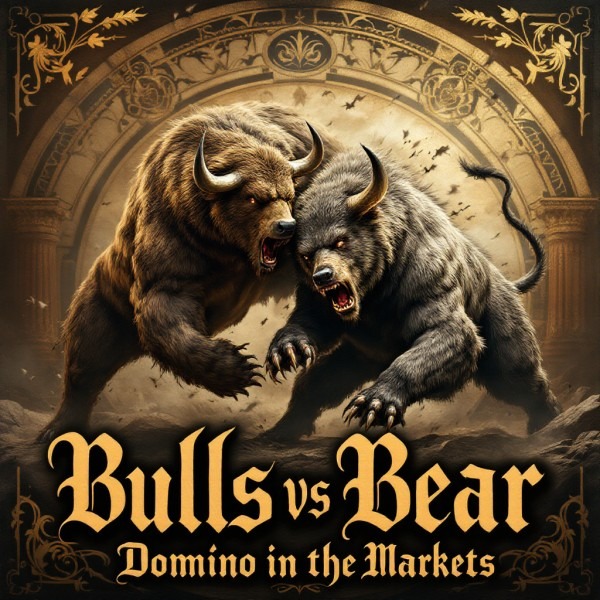What is a Bull Market vs Bear Market: Lessons from Investing Titans
Feb 20, 2025
Understanding Market Cycles with Precision
Financial markets are constantly changing, oscillating between periods of growth and decline. These shifts define bull and bear markets, two opposing forces that dictate investment strategies and market sentiment. Understanding these cycles isn’t just theoretical; it’s a crucial skill that separates seasoned investors from the herd. By examining historical trends and applying insights from legendary investors, we can extract key lessons to navigate these volatile phases effectively.
The Mechanics of a Bull Market
A bull market is defined by sustained price increases across equities fueled by economic expansion, strong corporate earnings, and high investor confidence. Historically, these phases have rewarded those who position themselves early. The post-2008 recovery serves as a textbook case—those who ignored fear-driven narratives and bought into fundamentally strong assets saw exponential gains.
Warren Buffett’s famous mantra, “Be fearful when others are greedy, and be greedy when others are fearful,” highlights the psychology behind market cycles. Smart investors recognize that bull markets don’t emerge from euphoria; they are born in pessimism, nurtured by scepticism, and only embraced when latecomers have already pushed valuations to extremes.
The Reality of a Bear Market
Bear markets—defined by prolonged price declines of 20% or more—signal economic downturns, rising unemployment, and plunging investor sentiment. These corrections can wipe out speculative excess and punish those who lack discipline. The 2008 financial crisis was a brutal reminder of this reality, with overleveraged institutions collapsing under their weight.
Yet, history has proven that bear markets are not just periods of destruction but also opportunities. As Benjamin Graham, the father of value investing, noted, “In the short run, the market is a voting machine, but in the long run, it is a weighing machine.” True investors use downturns to acquire undervalued assets while the panic-driven majority retreats.
Mastering Market Cycles: The Investor’s Edge
The key takeaway from market legends is that bull and bear markets are inevitable—and predictable for those who understand the forces at play. Instead of reacting to market sentiment, strategic investors build positions based on fundamental value, technical indicators, and macroeconomic trends.
Bull markets reward those with foresight, but bear markets forge those with discipline. The ability to recognize irrational exuberance at market peaks and seize opportunities at market troughs is what separates speculators from true wealth builders.
A No-Nonsense Comparison of Market Extremes
Financial markets don’t move in straight lines—they surge and collapse, cycling through phases of euphoria and despair. Bull markets fuel expansion, while bear markets punish excess. The ability to recognize and exploit these shifts separates true market tacticians from emotional traders.
Relentless price appreciation, corporate profits, low unemployment, and euphoric sentiment characterise bull markets. Capital flows freely, speculation runs rampant, and risk-taking is rewarded. Fortunes are built in these markets—but only for those who know when to get in and, more importantly, when to get out.
Bear markets, on the other hand, are financial battlegrounds. Stocks nose dive, fear dominates, and weak hands capitulate. Economic contraction, rising unemployment, and liquidity crises define these brutal downturns. Yet, this is where real wealth is forged—not by panicking, but by seizing opportunities while others flee.
Understanding these cycles isn’t about guesswork. It’s about reading the economic signals—GDP growth, inflation trends, interest rates, and earnings cycles—all of which dictate the tide of the market. Traders who master these indicators don’t fear bear markets; they exploit them.
The Tactical Approach to Bull and Bear Markets
Bull Market Playbook:
This is the time to be aggressive but calculated. Growth stocks, high-beta plays, and momentum trades dominate. Position early when pessimism still lingers—because it’s already too late by the time euphoria sets in. John Templeton’s wisdom rings true: “Bull markets are born on pessimism, grow on scepticism, mature on optimism, and die on euphoria.” Recognizing the final stage keeps you from being the last fool holding the bag.
Bear Market Playbook:
This is where amateurs lose their shirts, and pros set the foundation for generational wealth. Panic is the enemy; discipline is the weapon. Capital preservation, defensive sectors, and alternative assets (gold, bonds, commodities) dominate. The strongest players shift from risk assets to undervalued plays before the cycle turns. Peter Lynch’s words cut through the noise: “Know what you own and why you own it.” That knowledge is the difference between surviving and thriving in a bear market.
Lessons from Investment Legends
The insights and wisdom shared by investment legends serve as invaluable guides for navigating the complexities of bull and bear markets. John Templeton’s observation of market cycles highlights the psychological aspects of market behaviour, reminding investors to be mindful of the prevailing sentiment and to act accordingly. By recognizing the stages of market sentiment, investors can make more informed decisions about when to enter or exit positions, taking advantage of opportunities that arise during market transitions.
Peter Lynch’s emphasis on investment knowledge underscores the importance of conducting thorough research and understanding the fundamentals behind one’s investments. In both bull and bear markets, having a clear grasp of the companies, sectors, and assets one invests in is crucial for making sound investment decisions. Investors can navigate market cycles with greater confidence and resilience by focusing on investments’ underlying value and growth potential rather than getting caught up in short-term market fluctuations.
Conclusion: Mastering Market Cycles with Surgical Precision
Market legends didn’t ascend to greatness by following the crowd. While others hesitated, they deciphered cycles, exploited sentiment, and executed with conviction. Bulls reward those who act decisively, bears punish the complacent—but both offer extraordinary opportunities for those who master their nuances.
Success in investing isn’t about reacting to headlines; it’s about understanding the underlying forces that drive market behavior. Bull markets are fueled by expansion, optimism, and liquidity, while bear markets are driven by contraction, fear, and deleveraging. The ability to adapt to these phases is what separates skilled investors from casualties of market hysteria.
The playbook for navigating market cycles isn’t a secret—it’s discipline, strategy, and execution. The greatest investors, from Warren Buffett to John Templeton, understood that true wealth is built not by chasing trends but by positioning ahead of the curve. They mastered the art of capital deployment—knowing when to be aggressive and when to defend.
Investors can move beyond fear and speculation by internalizing the lessons of investment giants and aligning strategies with the realities of market cycles. The key isn’t just knowing when to buy or sell—it’s developing the foresight to act when others hesitate and having the conviction to execute precisely.
Bull or bear, the opportunity is always there. The question is: Will you have the discipline to seize it?
Connecting the Dots: Cross-Disciplinary Gems
Unlocking the Secrets: How to Achieve Financial Independence?













